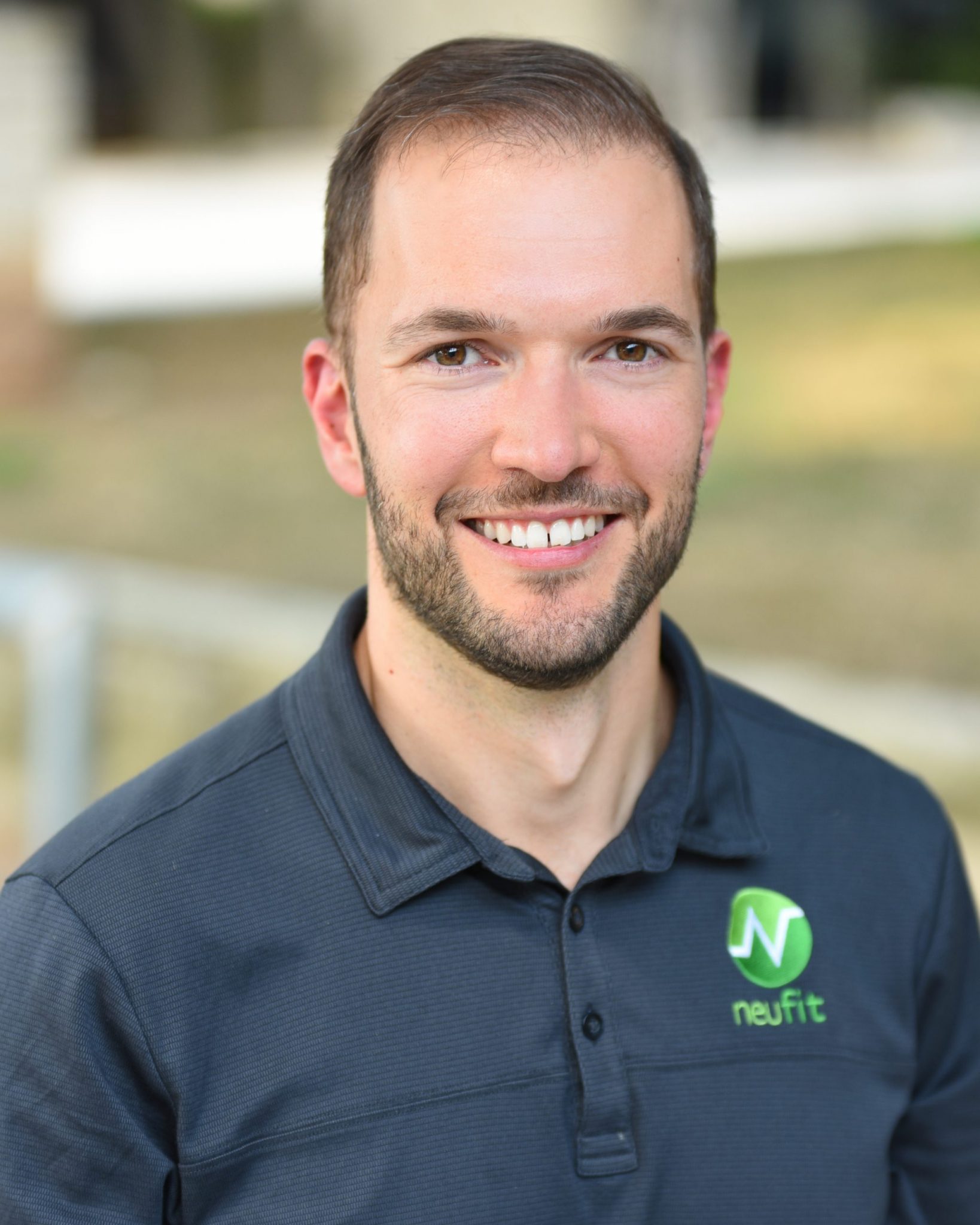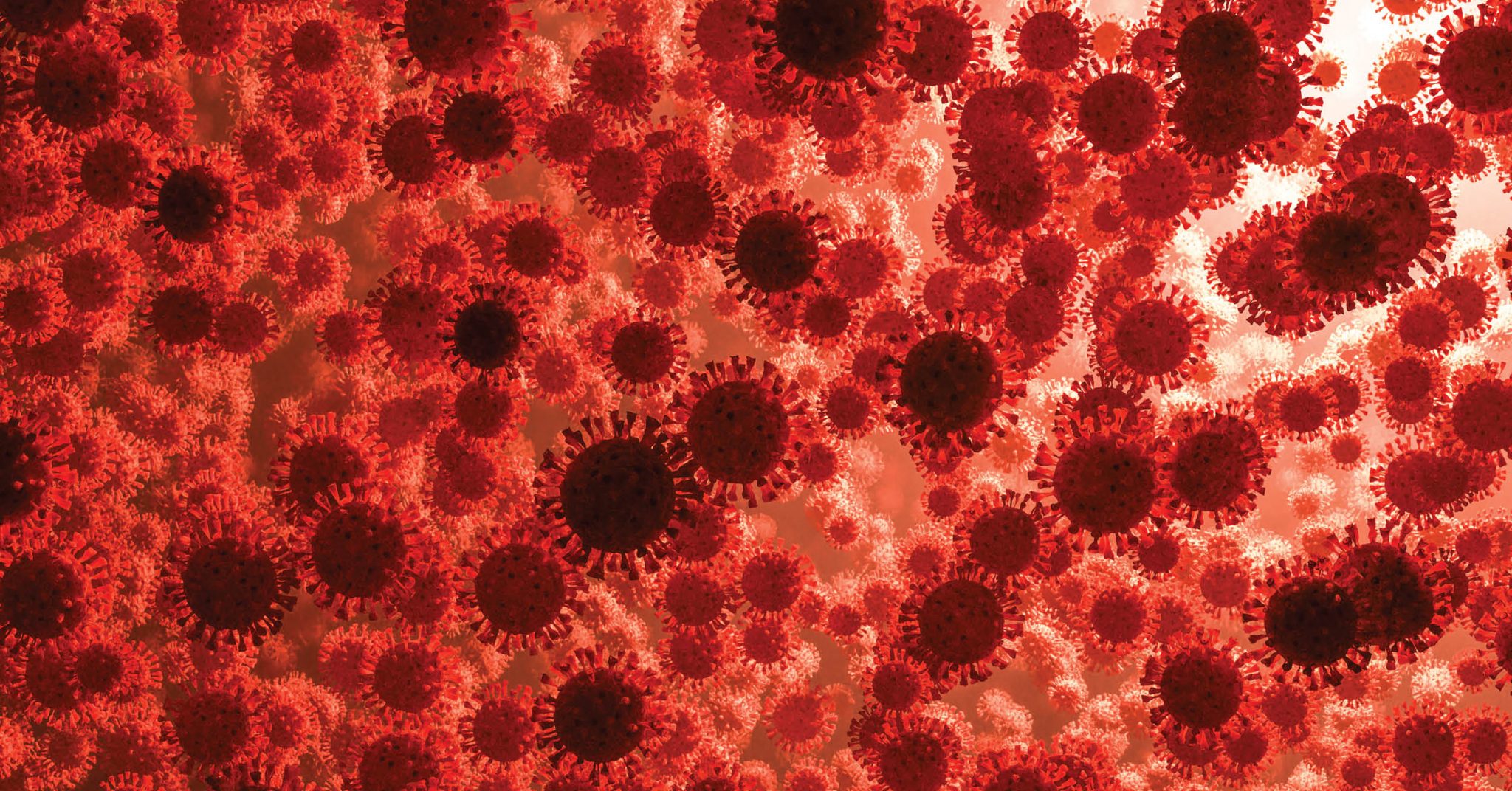Use electrical stimulation to regain lost muscle function with Neufit
This is one interview you have to hear—
The unique properties of Neufit’s direct current stimulation device are making a dramatic difference in the lives of MS (multiple sclerosis) patients or patients who have lost function because of other neurological injuries or neurodegenerative diseases.
By using this type of current, they’re able to tap into the nervous system at that level to make changes that, typically, come faster and, typically, are more significant or more meaningful over time.
In this interview you’ll learn…
- Why you need to shift your rehab mindset to that of an athlete mindset
- Why neuroplasticity is so important to overall health (like reaching the parasympathetic state where repair happens)
- Hear inspiring cases of Neufit helping to recover function in walking and in hand strength (one woman is playing piano again after 20 years!)
- Hear about research studies looking at the impact of using the Neubie during training vs. regular training
- And more interesting education on this specific e-stim programming
This information is relevant to everyone
Neufit is a Wahls Protocol Seminar sponsor. I am grateful for the partnership with this company and sponsorships like this are part of how we are able to produce so many informational resources at no cost to you. I hope that you do find the information shared to be beneficial!
Learn more about neufit and their neubie device at neu.fit/wahls
Read the transcript below:
Dr. Terry Wahls:
Hello, Wahls Warriors™, welcome to another great interview. Today I’m interviewing Garrett Salpeter, he is the founder and CEO of NeuFit. Garrett has a really interesting background, he’s an engineer, an entrepreneur, he’s developed a really marvelous device for training and rehabilitating—initially athletes— and now patients. He’s worked with professional and collegiate athletes in baseball, football, hockey, he’s worked with Olympians, he’s now worked with patients helping them get out of pain, improve strength, improve mobility. His company, NeuFit, is also a Wahls Protocol® Seminar sponsor. These sponsorships are a great way for all of you to learn more about the devices and products that I use every day as part of my rehabilitation and my maintenance of strength.
I love my NeuFit, it is energizing, it is a wonderful adjunct to my exercise to maintain my strength and my mobility. Garrett, let’s get started. First, let’s have a quick overview of the NeuFit technology, because not everyone will have heard of you. I know I talk about you a lot and how much I love my Neubie and my NeuFit, but not everyone will have heard of you before, so please give us a quick overview.
Garrett Salpeter:
Yes. Thank you so much Dr. Wahls, I’m really honored to be on here and talking with the Wahls Warriors™. In terms of the NeuFit and the Neubie device here, the biggest difference between this and most of the other types of modalities out there that are utilizing electricity and working the muscles is that this is a direct current stimulation device. What that allows us to do is, really, two main things. If we’re working with MS (multiple sclerosis) patients or patients who have lost function because of other neurological injuries or neurodegenerative diseases, it allows us to do this mapping process, so we can actually take an electrode, scan around on somebody’s body, and identify precisely which neurological pathways are inhibited, deficient, or where the issues are, so we know exactly where to apply the stimulation.
Then, when we apply that stimulation, because of the unique properties of this direct current signal, we’re able to… It sounds a little bit counterintuitive at first blush here, but we’re able to bypass a lot of the muscle contractions in order to speak more directly, more powerfully, and more precisely to the nervous system, so that we can tap into the body’s capacity for neuroplastic change and improve the underlying neurological signals that control our muscles and regulate movement, strength, range of motion, coordination, and sensation. By using this type of current, we’re able to tap into the nervous system at that level to make changes that, typically, come faster and, typically, are more significant or more meaningful over time.
Dr. Terry Wahls:
I stress this. This is such a powerful tool to speed the rehabilitation for people who have neuro muscular disorders. I know we’ve done some intensive MS (multiple sclerosis) boot camps. Can you tell us a little bit about how they work and some of the results that you’re seeing?
Garrett Salpeter:
A lot of people, if they hear an interview like this or hear about a friend who’s used the Neubie device somewhere else, they’re intrigued and wish to try it. There are a few different ways to do that. One is, if you’re looking at this, we can share our website link and everything to find certified providers, and perhaps there might be someone in your area. If there isn’t, however, there are some other options. We’ve had a lot of Wahls Warriors™, actually, come to our facility in Austin, Texas for these weekend intensives, or weekend boot camps, where MS patients have come and they’ve done two sessions a day. That’s why it’s an intensive, we’re doing a lot of work. Two sessions a day Friday, Saturday, and Sunday, having group educational, and learning opportunities over lunch. Wahls Protocol® compliant lunches, I might add also.
Dr. Terry Wahls:
Perfect, perfect.
Garrett Salpeter:
That’s right. These have been really cool, because they’ve given people an opportunity to come and experience these treatments. For many of them, they’ve actually noticed significant progress, even in the first three days, which, for some people who have been on a plateau or haven’t made progress in months or years, it can be a little bit surprising, but we’ve had people notice improvements in drop foot and being able to improve their gait. They can walk more smoothly, because they’re able to lift up their foot, or they notice new sensations in their hands or feet, or better dexterity and ability to use their thumbs and fingers to open doors, manipulate objects, or bring food to their mouths. We’ve seen people make progress and some of them have wanted to continue doing treatments, so they actually have rented or purchased the device.
Our physical therapist, we have a team of people who work remotely with patients around the world, will continue to make custom programs for those people. Many of them now, we’ve seen, have been able to continue to make progress for months afterwards. We’ve gotten a couple videos, we got a video from a woman who sent us… She had been here and we saw her walking with tremendous difficulty with a cane or a crutch in each arm, and she sent us a video about eight weeks later of her walking without any hand support out to the mailbox and back from her house.
Garrett Salpeter:
Really, really cool. We saw another video of a woman who had come to our weekend intensive and she had a really interesting story. She was actually a very accomplished pianist, playing the piano in her early twenties. That’s when she started to have MS symptoms and she had to give up. She was going to Julliard, the premier musical school, and she had to withdraw because of her MS symptoms. Now, 20 years later, doing work with the Neubie device on her hands. She sent us a video wearing the electric gloves, our gloves were hooked up to the machine, she was getting the current in there, and she was actually playing her scales on the piano. It moved us to chills when we were watching that video. We’ve seen some really cool things happen.
Some of these things happen quickly, but some of them definitely take time, so I don’t mean to imply that everything comes in three days or three days is all you need, but often it’s a good indicator of how quickly and how significantly someone might be able to respond, and it gives us a sense of what opportunity there might be for longer term progress.
Dr. Terry Wahls:
For all of you who are listening… People have been so intrigued that I made such dramatic recovery in a year’s time, an E-Stim was certainly part of that. It was daily work with a physical therapist and then, three times a week, work with a physical therapist for four years, and I still work with physical therapists on a regular basis. I still check in on my E-Stim program. Getting more muscular strength and coordination requires that the muscles and the nervous system do work in an effort on that person’s part. The benefit of E-Stim is that, it doesn’t replace, but it accelerates those gains. You still have to be willing to do the work. For people who are paralyzed, who’ve had a complete transaction of their spinal cord, doing E-Stim can do great things for you metabolically and quality of life. It can still be really, really helpful, even if you’ve had a severe spinal cord injury, so that your rehab doc says, “You’re never going to walk again.”
We have people who still do E-Stim just for all the metabolic and quality of life benefits. I heard that you’ve got some published articles, peer-reviewed articles, either in process… Can you give me an update on that?
Garrett Salpeter:
Yes. We’ve had a couple cool developments, actually, since you and I last got to catch up. We had our first journal article published in a peer-reviewed journal on the Neubie device, and it speaks to the effect on muscle hypertrophy or reducing muscle atrophy. There’s a really interesting extreme example of muscle atrophy seen in astronauts, or people who are in a weightless environment. If you’re unloaded, for as little as one day, muscles will start to atrophy, so if we’re not using muscles over time, they atrophy, they lose their size and strength. That’s a problem, of course, for function. Less strength is less opportunity to lift objects, to support ourselves, to catch our balance, to get around the world, and also less muscle mass is a problem for longevity.
Muscle is very important for regulating blood sugar and the metabolic health, inflammation. There’s a lot that muscle mass does beyond its mechanical function, there’s a lot that it does health wise too. We’ve seen some really cool evidence in this study, I’m happy to share the link also, that shows that the effect of using the Neubie is very, very similar to the effect of traditional resistance exercise. Traditional resistance exercise, the gold standard, is using something like 75 to 80% of one rep max, so that means, if you could lift 100 pounds in a movement, then you’d be doing like 75 or 80 pounds. If 100 pounds is the most you could lift, you’d be doing 75 to 80, and maybe you’d do that for six or 10 repetitions, or something like that.
With the Neubie, we’re able to do no external load, put the pads on, and do the same movement. In this first study, it was a bicep curl, it was just lifting the arm on one side, lifting the arm on the other side, and they saw similar effects in terms of looking at muscle cell… The movement of fluids inside the muscle looking at ultrasound, they saw similar changes in fatigue and soreness… Excuse me, in that acute phase, looking right after exercise. The next study that is just about to be published… I won’t share the punchline yet, I won’t share the final results. Excuse me, let me grab a sip of water here.
The next study is then looking at what happens over a full training cycle. If we’re using it twice a week for six to eight weeks, comparing traditional resistance trainings, that 75 to 80% maximum weight, versus using the Neubie with little to no external weight. What happens over a full training cycle in terms of muscle strength and muscle growth, muscle mass hypertrophy. That’s coming out soon, so I won’t share the details, but I will say that it’s positive.
Dr. Terry Wahls:
Exciting stuff. We can tell from your face it’s exciting stuff.
Garrett Salpeter:
Yes. There’s another study that we’ve done a pilot work with a group in the metropolitan New York area, they’ve got some offices in New York city, some on Long Island, they got a few clinics around there. Working with them to look at neuropathy patients. What’s really interesting about this group is that they do a lot of very sophisticated measurements with EMG and nerve conduction testing. That, literally, would mean putting little needles into the nerves, measuring how much electrical activity is happening, measuring the time for a signal to transmit from the top of a nerve to the bottom of that nerve. Sometimes it’s electrodes on the surface of the skin, sometimes it’s needles for the more precise measurements.
There, in this pilot, which is being expanded now and we have IRB approval for a much larger study, they saw some really cool outcomes like nerve conduction velocity increasing, which indicates a regeneration of myelin in patients who have had damage from neuropathy. Although the mechanism might be different than MS, it is a neurodegenerative process, and there’s a lot of overlap, a lot of similarity too. We also had one case where there was a man in his eighties who had nerve damage from a virus, he had lost some function in one of his legs. They measured, over time, changes in him. They were seeing progress after the initial 12 weeks, so they kept going, they kept seeing progress at six months, and they measured these changes that showed collateral sprouting, which means the growth of new nerves in someone who was in his eighties, which is previously unfathomable that people could grow, not only new nerves generally, but at such an age as well.
We’re seeing some really cool things happening as a response to these treatments with the Neubie. It really speaks to this concept of focusing more on stimulating the nervous system, creating those types of changes, harnessing the power of direct current, and all those topics we’re talking about at the beginning.
Dr. Terry Wahls:
Let’s talk about heart rate variability. I know there’s a protocol that I personally like a lot, the master reset. Have you guys done anything with how the Neubie affects heart rate variability?
Garrett Salpeter:
We have seen some really cool outcomes there too and we’ve used a couple of different measurement tools. One is this wrist wearable device that I have on my wrist called, “Biostrap,” we did a commercial study with them. That was basically looking at what’s happening in the clinic. Not peer-reviewed, but still rigorous methodology. We can share that. Then we’ve used an even more sophisticated device where you have electrodes on each arm, so it’s measuring the electroactivity throughout, from one hand to the other, so across the whole chest. Looking at multiple measurements of heart activity. In both of these, we’ve seen that using the Neubie generally, and specifically this master reset protocol, has helped people increase heart rate variability dramatically.
That’s important, for people who don’t know, because it’s a proxy for the vagus nerve. Not Las Vegas, but vagus, V-A-G-U-S nerve, which is the main pathway for the parasympathetic nervous system. Even if people don’t know what that means, we all probably understand that having too much stress or not being able to keep up with the stresses and challenges of our lives, and spending too much time in that fight or flight state, is problematic for health, is problematic for exacerbations of autoimmune conditions, is problematic for a lot of the lifestyle diseases that we face. The vagus nerve and the parasympathetic nervous system is the opposite branch of the nervous system, it’s the rest and digest, the attend and befriend, or feed and breed that regulates all of the organs of the body to work towards greater health and counteract the negative effects of stress. Being able to see these changes here… It’s typically 10 or 20 minutes, like a guided meditation. You have the machine on, you’re breathing, and doing that generally can be good.
We’ve measured that and then we’ve measured it with the machine, with the Neubie on doing the master reset, and that effect is amplified times three, times four, times five, in terms of the increase that we see statistically in heart rate variability.
Dr. Terry Wahls:
We have to be in a parasympathetic state to repair. If we want to repair our myelin, which if you have MS, we’re all about, “What can we do to improve our remyelination?” It’s diet, meditation, the master reset is a great adjunct. Neuroplasticity adaptation, functional improvement. Those are the things that we’re talking about here. When I went to medical school, we were taught that the brain cells you got when you’re born, that’s all you’re going to get, you won’t get anymore. If you screw up and you damage them, you’re out of luck and there’s not a whole lot that you can do. What Garrett and I have been talking about is there is so much that you can do. You’ve heard me for years talk about diet, you’ve heard me talk about exercise, the NeuFit is a great way to accelerate that neuroplasticity. You want to talk a little bit more about the autonomic nervous system? Do you have any more comments about that, Garrett?
Garrett Salpeter:
The main point that I would like to get across on that is that… The dynamics of the autonomic nervous system, spending too much time in fight or flight, or being able to balance it with more of this rest and digest state is so relevant, because those are the parts of the nervous system that control heart rate, digestion of food, elimination of waste, reproductive function. So many of the lifestyle diseases that we have are related to blood pressure, indigestion, issues with waste elimination, constipation, and fertility. Those are all the things that are controlled by the autonomic nervous system, so it’s super relevant. I want to make sure people understand that it’s not just some ivory tower concept, but it actually affects us in daily life and can have a dramatic impact on our health.
Dr. Terry Wahls:
The longer you have your autoimmune disorder, whether it’s multiple sclerosis, rheumatoid arthritis, inflammatory bowel disease, psoriasis, the more like you are to have autonomic nervous system dysfunction. Cold hands, difficulty with your blood pressure. Improving your heart rate variability, your vagus stimulation, is a very important tool for addressing that autonomic nervous system dysfunction. Okay, Garrett, we should be wrapping this up. Do you have any closing words of wisdom for people?
Garrett Salpeter:
If I could share one last thing, I would love to speak for a moment about that topic of neuroplasticity. It’s interesting, obviously, we’re grateful that we have some durability, that our brains just don’t flip flop and change moment to moment, because we want to remember things, but fortunately, we do have this opportunity to make changes and to restore function that’s been lost. In order to tap into that power, it typically takes the equivalent amount of effort as it would take to train to be a professional athlete or an Olympic gold medalist. It typically would take hours of focused work every day for, not just weeks and weeks, but months and months, and years and years. The reason for that is that it takes a lot of energy and resources for the body to rebuild and remodel these neurological pathways in the brain, the spinal cord, and the periphery.
We have to, not only be healthy enough to have that extra energy and resources available, but we also have to get enough input so that the brain, basically, gets the point that, “Look, this is an important pathway. We’re going to be using this enough, it’s worth investing long term energy and resources to upgrade that so it’s available in the future.” It normally takes that amount of time. First of all, I want everyone who’s thinking about how to restore function because of MS, that’s been lost because of MS or other neurodegenerative diseases, to start thinking of themselves as athletes. If you’re already a Wahls Warrior™, that’s part of it. Really think of yourself as an athlete, even if you didn’t identify as such previously.
Where technology like the Neubie and where NeuFit might be able to come in and help you is to help you find a way to train more efficiently and effectively as an athlete, to be able to get more bang for your buck, so that each session… In a 45 minute session, you might be accomplishing as much as when it might normally take two or three hours. It’s still a process, it still takes a lot of time and effort, you still have to reach that critical mass of input in order to drive changes, and this can help you do it faster and more efficiently. There’s still a lot to do, but the difference between, if you can accomplish an 18 months what might normally take 24 or 36, that is still an improvement. That’s the type of perspective that I’d like to bring to this and I definitely would encourage everyone listening to identify as an athlete, treat yourself, treat your body like an athlete.
Dr. Terry Wahls:
Okay. Closing words, how do people find you? Give us your website and we’ll make sure we have the links as well in the show notes, but where do people find you, Garrett?
Garrett Salpeter:
If you’re interested in learning more specifically about how NeuFit can help with restoring function, because of loss, because of MS, or other neurodegenerative diseases, go to neu dot fit, that’s Neu.fit/wahls. There’s a landing page there with some more information, a presentation, a link to find providers near you, and ways to get in touch with our team. We’re also, in terms of social media platforms, most active on Instagram and it’s NeuFit RFP, for Rehab Fitness Performance, NeufitRFP We’d love to interact with you on direct messages or through our website. You can reach out to our team, we’re happy to support you however we can, even if it’s introducing you to a therapist in your city.
Dr. Terry Wahls:
Okay, that was wonderful. All of you who are watching and listening, please tell us what was the takeaway? What is the one thing that you learned listening to Garrett? What is the one thing that you’re going to begin doing as part of your transformation? Personally, I’m rooting that you’ll decide you’re going to be an athlete and begin slowly training up your body and your nervous system to this new life that you visualize. I also invite you to go to my website, Terry Wahls.com , sign up for my newsletter, so you can get the research updates and learn about the other products that I use every day as part of my rehabilitation and my commitment to have the best life that is possible. Once again, Garrett, thank you so much for all of your work and thank you so much for being here today.
Garrett Salpeter:
Thank you, Dr. Wahls. It’s been a pleasure.
About CEO / Founder Garrett Salpeter:

Known as “The Health Engineer,” Garrett has taken his education in Physics (BS) and Engineering (MSE) and applied it into a system for making the human body better. His journey started when he picked up ice hockey as a boy. It was a game he loved, but for which he had little natural aptitude. After several years “skating by,” he decided to delve deeply into the world of strength and conditioning to try to give himself a chance to play at a higher level. Unfortunately, what was popular at the time did not work for him — and he kept searching.
In dealing with some injury problems, he learned about the paramount importance of the nervous system, and saw the connections to how the same neurological principles could be applied to fitness. The neurological approach worked, and he never looked back. He became determined to learn as much as possible about how to affect the nervous system. To that end, he spent hundreds of hours in self-study, mentored under several leading-edge practitioners, tested many of his theories on himself and others, and even went back to school for a Ph.D. program in Neuroscience (from which he took a leave of absence to launch the Neubie device).
In 2009, he opened his first facility in Austin, TX to start sharing these methods with his community. This has grown into what we now know as NeuFit, which combines an advanced understanding of physiology with the best practices from diverse training and therapeutic practices, and constantly pushes these processes by using technology to accelerate them further. Since that first day, he has worked with people of all ages and in almost all situations, including athletes from MLB, the NFL, the NHL, the NBA, UFC, Olympics, NCAA, and more, helping them get out of pain, improve performance, sometimes avoid surgeries, and live life at a higher level.
He lives in Austin, Texas and is ecstatically in love with his wife, Briana, and their two daughters, Gwenny and Gemma.




